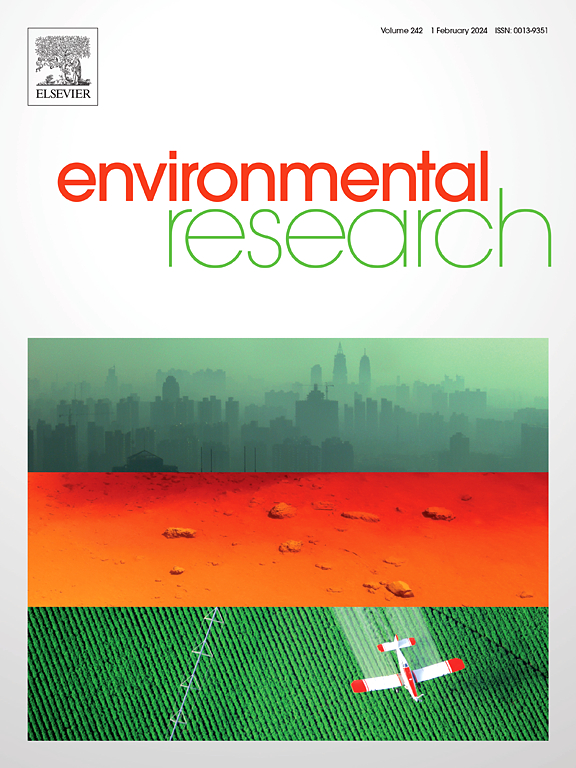C/ n驱动的协同作用:蚯蚓在花卉废物回收中优化CO2/N2O缓解和土壤质量
IF 7.7
2区 环境科学与生态学
Q1 ENVIRONMENTAL SCIENCES
引用次数: 0
摘要
花卉种植的扩大增加了对可持续花卉废物管理的需求,以支持农业碳中和。本研究评估了康乃馨、百合和玫瑰秸秆改良剂(不同碳氮比、木质素和纤维素)对蚯蚓(Eisenia fetida)土壤温室气体排放和土壤质量的影响。通过控制微观环境试验,研究了秸秆类型和蚯蚓对CO2和N2O通量、土壤性质、酶活性和微生物功能的影响。结果表明,蚯蚓增强了秸秆矿化,与对照组相比,累计二氧化碳排放量增加了1.09 - 1.50倍(P < 0.05)。N2O排放量随碳氮比的变化而变化:蚯蚓减少了42.7%(石竹)和20.3%(百合)的N2O排放量,但增加了56.4%(月季)。低碳氮比系统(康乃馨+蚯蚓)实现了最佳的温室气体减排,减少了42.7%的N2O排放,适度增加了9.1%的CO2,突出了木质素含量高和微生物N限制的风险。土壤质量指数(SQI)显示,与单独处理(TDS-SQI: 0.53-0.60)相比,蚯蚓-秸秆互作显著改善了土壤质量(TDS-SQI: 0.61-0.68) (P < 0.05)。TDS-SQI结果表明,蚯蚓-秸秆组合,特别是低碳氮比组合,对土壤质量和温室气体减排均有优化作用。这项研究强调了蚯蚓调节碳氮循环的潜力,为支持碳中和目标的可持续花卉废物回收提供了可行的策略。建议将这种方法优先用于可持续农业的花卉废物回收计划。本文章由计算机程序翻译,如有差异,请以英文原文为准。

C/N-Driven Synergies: Earthworms optimize CO2/N2O mitigation and soil quality in floral waste recycling
The expansion of floriculture has increased the need for sustainable floral waste management to support agricultural carbon neutrality. This study assessed the impact of carnation, lily, and rose straw amendments (with varying C/N ratios, lignin, and cellulose) on GHG emissions and soil quality with earthworm (Eisenia fetida). Controlled microcosm experiments were conducted to examine the effects of straw types and earthworms on CO2 and N2O fluxes, as well as soil properties, enzyme activities, and microbial functions. The results revealed that Earthworms enhanced straw mineralization, increasing cumulative CO2 emissions by 1.09–1.50-fold compared to controls (P < 0.05). N2O emissions varied by C/N ratio: earthworms reduced N2O emissions by 42.7 % (carnation) and 20.3 % (lily), but increased it by 56.4 % (rose). Optimal GHG mitigation was achieved in low-C/N systems (carnation + earthworms) which reduced N2O emissions by 42.7 % with a moderate CO2 increase (9.1 %), highlighting the risks of high lignin content and microbial N limitation. Soil quality, measured through the Soil Quality Index (SQI), was significantly improved by earthworm-straw interactions in all treatments (TDS-SQI: 0.61–0.68) compared to straw-alone controls (TDS-SQI: 0.53–0.60) (P < 0.05). The TDS-SQI revealed that Earthworm-straw combinations, especially those with low C/N ratios, optimized both soil quality and GHG mitigation. This study highlights earthworms' potential to modulate carbon-nitrogen cycling, offering a feasible strategy for sustainable floral waste recycling that supports carbon neutrality goals. Prioritizing this approach in floral waste recycling programs is recommended for sustainable agriculture.
求助全文
通过发布文献求助,成功后即可免费获取论文全文。
去求助
来源期刊

Environmental Research
环境科学-公共卫生、环境卫生与职业卫生
CiteScore
12.60
自引率
8.40%
发文量
2480
审稿时长
4.7 months
期刊介绍:
The Environmental Research journal presents a broad range of interdisciplinary research, focused on addressing worldwide environmental concerns and featuring innovative findings. Our publication strives to explore relevant anthropogenic issues across various environmental sectors, showcasing practical applications in real-life settings.
 求助内容:
求助内容: 应助结果提醒方式:
应助结果提醒方式:


